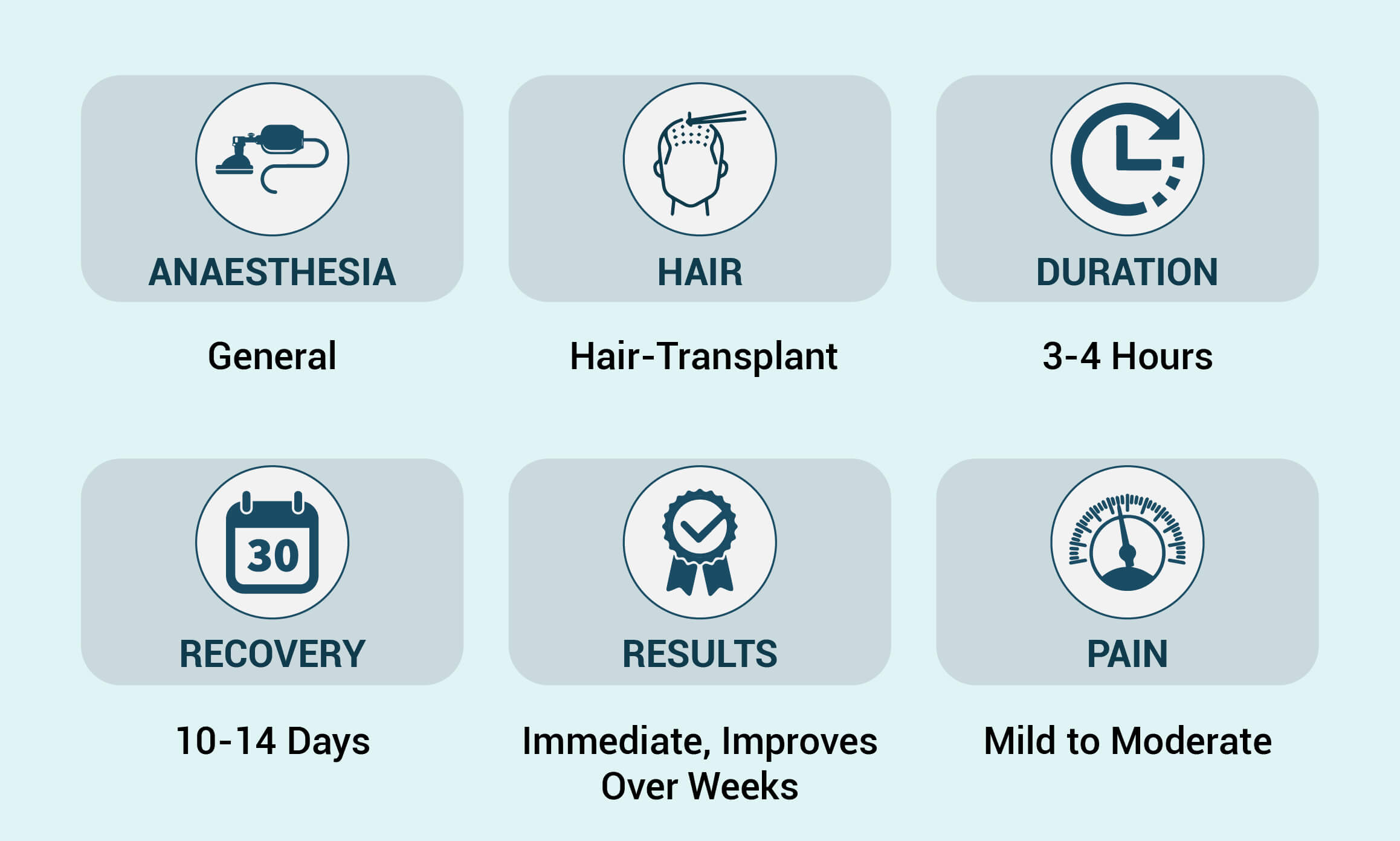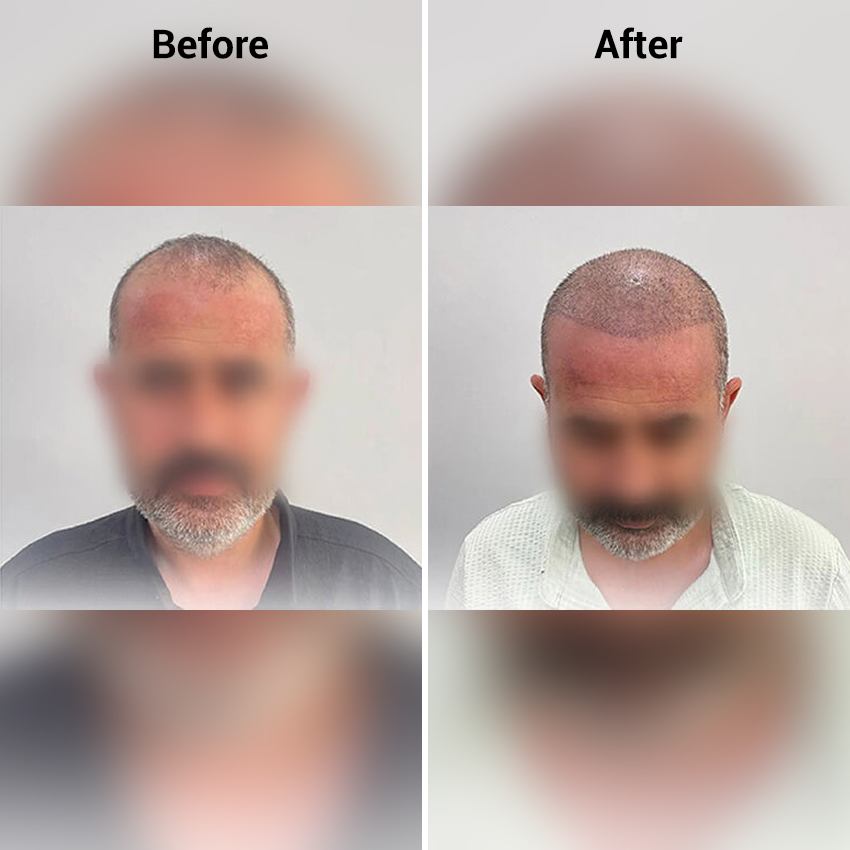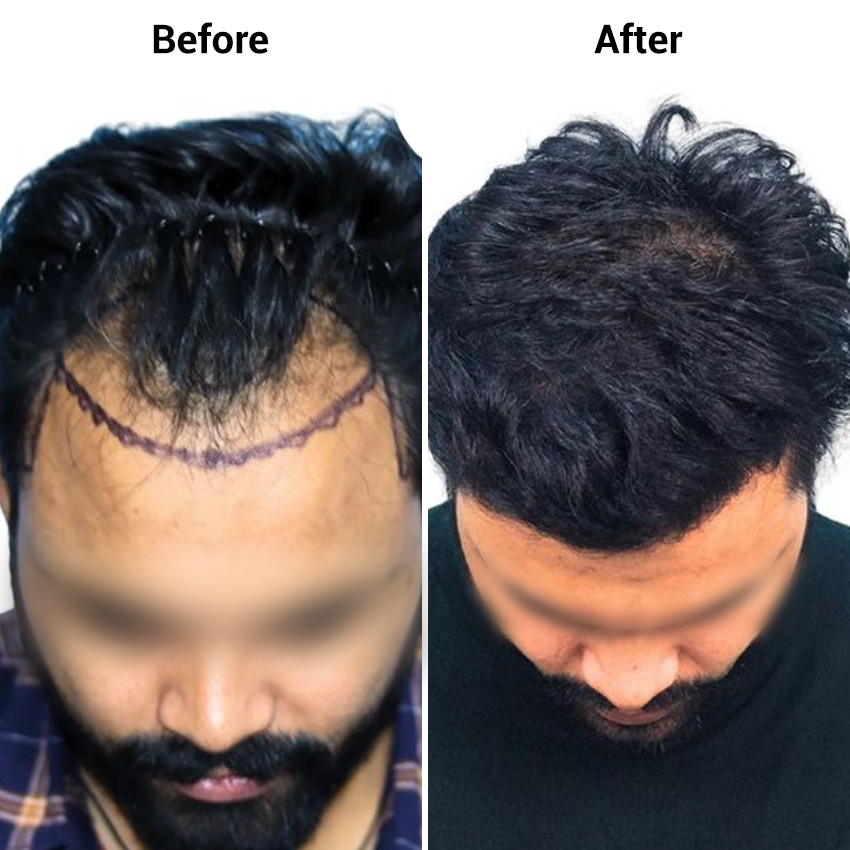Hair Transplant Surgeon in Mumbai
Looking for a solution to your hair loss in Mumbai? Consider a hair transplant in Mumbai and get back to feeling like yourself again.
Hair Loss or Alopecia, is a common problem that affects both men and women and can be caused by stress, diseases, some medical treatments, and genes. While some of these factors are temporary or can be reversed, many people suffer permanent hair loss that can lead to self-confidence issues.
If you are looking for the Best Hair Cosmetic Surgeon for women and men in Mumbai, read the content below.



What is a hair transplant?
A hair transplant is a surgical procedure involving moving hair follicles from one part of the body (the donor site) to another (the recipient site) where hair is thinning or balding.
Hair follicles are typically extracted from the back or sides of the scalp, where hair is less prone to balding. These follicles are then transplanted into areas experiencing hair loss or thinning.
This method effectively treats both male and female pattern baldness and hair loss resulting from medical conditions, surgery, or injury.
The benefits of hair transplant include:
Improved Appearance:A hair transplant can restore a fuller head of hair, making people feel more confident and attractive.
Permanent Solution:Unlike other hair restoration methods, such as wigs or hairpieces, hair transplant provides a permanent solution to hair loss.
Low Maintenance cg:Once the transplanted hair grows, it can be treated like any other hair, requiring no special maintenance.
Natural-looking Results:Hair transplant results in natural-looking hair growth, as the transplanted hair follicles are taken from the patient's own scalp.
Cost-effective:Although procedures may seem pricey initially, they are a worthwhile investment in the long term because they eliminate the need for constant hair restoration treatments and upkeep.
Improved Self-esteem:Restoring a fuller head of hair can improve self-esteem, boost confidence, and enhance the overall quality of life.
No Scarring:With modern techniques, scarring is minimal and often not noticeable.
Ideal Candidate for Hair Transplant
You are most likely a good candidate for this procedure if:
You are in good general health, have a positive attitude, and realistic expectations
You suffer from male or female pattern baldness and have thinning hair
Your hair loss is not a result of medication, stress, or medical treatment
Follicular Unit Extraction(FUE) Hair Transplant Procedure
We have performed hair transplants or plastic surgery hair transplants in Mumbai since the beginning of our practice. Our selected technique for hair restoration is Follicular Unit Extraction (FUE).
The hair transplant procedure using only Follicular Unit Extraction (FUE) typically involves the following steps:
Consultation with the surgeon:To begin the process, arranging a meeting with a certified hair transplant surgeon is important. This consultation will involve assessing the individual's hair loss and determining their eligibility for FUE treatment.
Anesthesia:The patient will be given local anesthesia to numb the scalp so they do not feel any pain during the procedure.
Hair extraction:During a hair transplant, the surgeon will extract hair follicles from the donor site, typically located at the back or sides of the scalp. This is done using a small, hollow needle to carefully remove individual follicular units containing between 1 to 4 hairs while preserving their integrity.
Hair implantation:After removing the hair follicles, the surgeon will create small incisions where the hair is thinning or balding. The extracted follicles will then be carefully implanted into these incisions.
Proper placement:The surgeon will ensure that the hair follicles are placed in the correct direction and angle, to ensure a natural-looking hair growth pattern.
Timeframe:The procedure can take several hours, depending on how many hair follicles are transplanted.
Post-operative Care:After the procedure, the patient will be given instructions on how to care for their scalp and hair. They will need to take medications to help with healing and reduce the risk of infection. The patient will also need to avoid strenuous activity and wear a hat or bandage on their head for several days after the procedure.
New hair growth:After the hair transplant, new hair will grow from the transplanted follicles within a few months. However, it may take up to a year for full results to be visible. The FUE method typically results in no linear scarring in the donor area, allowing patients to wear their hair short without visible scarring. FUE is an excellent option for patients who want a less invasive procedure or have limited donor hair available.
What will it not do?
People who lack the supply of good quality head, body, or beard hair will not be candidates for any hair transplant.
A relative contraindication for hair transplant is generally the age of patients below 24. This is because someone under the age who suffers from androgenic Alopecia has likely not finished balding.
Some people with extremely curly or kinked follicles, such as most of African descent, are not good candidates.
People with an abnormal tendency to scar or keloids should avoid surgical treatments.
Does hair transplant last forever?
After a hair transplant, most of the transplanted hair will shed within a month. However, after approximately three months (90 to 100 days), new hair starts to grow and continues to do so at a normal rate.
It takes about six months for the transplanted hairs to begin to look natural, and they will continue to grow throughout a person's lifetime. The donor site from where the hair was taken will shrink to a small, barely noticeable incision line entirely hidden by the surrounding hair.
Timeframe of the Hair Transplant procedure
After hair is transplanted from the donor area to the recipient or bald area, it may take 12 to 18 months to grow, thicken, and fully mature. The hair will fall out within 4 to 6 weeks of the transplant.
Types of Hair transplant procedures
There are two main types of procedures:
Follicular Unit Transplantation (FUT) -This procedure involves removing a small strip of scalp tissue from the back of the head, where hair growth is strongest. The strip is then divided into small grafts that contain a few hair follicles each. These grafts are then implanted into areas of the scalp that are bald or experiencing thinning hair.
Follicular Unit Extraction (FUE) -This procedure involves taking hair follicles from the donor area using a small, circular punching tool. These follicles are then transplanted to the recipient area. FUE is a less invasive method and does not result in a linear scar like FUT.
Recovery and results
It is vitally important that you follow all patient care instructions provided by the plastic surgeon. Complimentary hair loss treatment will improve the results (See the section on non-surgical treatment for hair restoration).
After a short time (sometimes right after surgery), the hair grafts will fall out and not regrow for approximately three months. This is a completely normal process and will allow new hair to grow in its place. Restored hair will grow in the same fashion as one's native hair. Around nine months to one year, a patient should notice significant regrowth. Hair transplant results last a lifetime.
Hair transplant after Care
Hair transplant aftercare is essential to ensure the success of the procedure and the optimal growth of transplanted hair. Here are some key aspects of aftercare for hair transplant:
1.Avoid touching or scratching the scalp
2.Follow the prescribed medication regimen
3.Avoid strenuous activities
4.Avoid exposure to sunlight
5.Use a gentle shampoo and conditioner
6.Follow up with your doctor
Are hair transplants painful?
Hair transplant procedures may cause some discomfort or mild pain. Still, the pain level can vary depending on the person's pain tolerance, the technique used, and the size of the transplant area. Nevertheless, most hair transplant procedures are done under local anesthesia, which helps reduce pain and discomfort.
Patients may experience a slight pressure or pulling sensation during the procedure. Still, the anesthesia used typically ensures that it is painless. After the procedure, patients may feel mild pain, soreness, or discomfort in the transplant area for several days to a week. To alleviate this discomfort, the doctor may prescribe pain medication.
You should know that.
Fortunately, significant complications from hair transplants are infrequent. Thousands of people undergo successful hair restoration yearly and are pleased with the results. All surgical procedures have some degree of risk.
The cosmetic surgeon will explain all the details about the procedure, benefits, potential risks, and complications before you are asked to sign a consent.
In the specific case of hair transplant, the hair follicles may become inflamed or infected. For this reason, the plastic surgeon will prescribe antibiotic medication during the recovery time.
How Many Hair Transplants Do I Need?
The number of hair transplants needed can vary depending on the individual's degree of hair loss, the size of the transplant area, the thickness and density of the hair, and the desired outcome. It is best to consult with a hair transplant specialist to determine the appropriate number of procedures needed to achieve your desired results.
Hair transplant procedures are typically performed in one or multiple sessions. The number of sessions required depends on the extent of hair loss and the size of the transplant area. One session may be enough for some individuals to achieve the desired density and coverage. In contrast, others may require multiple sessions to achieve the desired results.
During a consultation, a hair transplant specialist will evaluate your hair loss and scalp condition and recommend a treatment plan tailored to your needs. They will also discuss the expected results, the required sessions, and the estimated procedure cost.
Which hair transplant is best FUE or DHI
Both techniques have their advantages and disadvantages. For example, FUE is less invasive than traditional hair transplant techniques and does not leave a linear scar on the donor area. However, FUE can be more time-consuming and may not be suitable for individuals with limited hair follicles available for transplantation.
On the other hand, DHI is less time-consuming and can provide more natural-looking results because it allows for more control over the angle and direction of hair growth. However, it may be more expensive than FUE and unsuitable for individuals with progressive hair loss.
Ultimately, the best hair transplant technique for you will depend on your individual needs and goals, hair type, hair loss extent, and other factors. It's best to consult a qualified hair transplant specialist who can evaluate your situation and recommend the best treatment option.
Why Choose The Plastic Surgeons
A leading trichologist in Mumbai, India, Dr. Vinay Jacob specializes in treating hair loss or Alopecia. He has over 10 years of experience performing hair transplant surgeries using advanced restoration techniques and tools. Through his transplant technique, he has earned the reputation as the most trusted hair transplant surgeon in Bandra, Mumbai.
 WhatsApp
WhatsApp